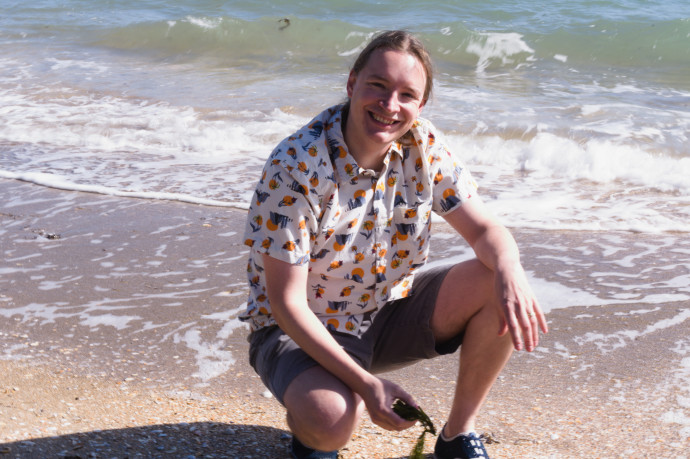Copying Spongebob: Reproducing the way marine sponges make medicines

Dr Tristan de Rond of Waipapa Tamata Rau the University of Auckland will explore how a marine sponge makes potentially bioactive molecules by identifying the biosynthetic pathways
Published on 3 Whiringa-ā-rangi November 2022
Marine sponges are the richest source of bioactive small molecules from the ocean. These molecules not only serve important ecological roles for the sponge, they have been developed into lifesaving medicines, including the anti-cancer drugs cytarabine and eribulin, enabled by the study of a sponge species from Aotearoa. Developing medicines from the bioactive natural molecules of sponges has traditionally relied on harvesting large quantities of the organism – a process that can be environmentally devastating to the fragile marine ecosystem. A better way to do this would be to learn how the sponges make these natural molecules, so that we can reproduce these processes in a less harmful way, using biotechnology to produce bioactive natural products in the lab. The first step towards this goal is to understand the processes of biosynthesis in these sponges. Biosynthesis is the process that all living organisms use to form complex products from simpler components through reactions at the cellular level. A well-known example of this is photosynthesis, where sugar is biosynthesized from carbon dioxide using the sun’s energy.
Dr Tristan de Rond has been awarded a Marsden Fund Fast-Start grant to explore the biosynthesis of molecules made by a marine sponge called Hamigera tarangaensis found living off the coast of Te Tai Tokerau Northland. The biosynthesised products that Dr de Rond will study are called hamigerans and they have medicinal potential including anticancer and antiviral activities. Dr de Rond’s goal is to gain insight into how H. tarangaensis produces hamigerans, by identifying the enzymes that carry out hamigeran biosynthesis. This could lead to being able to reproduce hamigerans sustainably through fermentation using engineered microorganisms. To achieve his aims, he will use a combination of DNA sequencing, computational analysis, and chemistry techniques.
This project will contribute to the fundamental understanding of the chemistry that occurs inside this taonga species living off the coast of Aotearoa. In the long-term, knowledge about how they make hamigerans could contribute to making lifesaving medicines.
